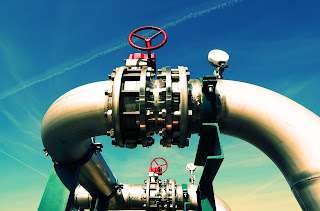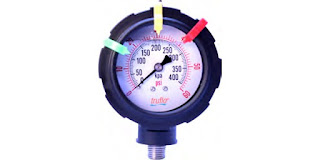 |
M.S. Jacobs provides measurement and control solutions
to the shale gas production and processing sectors. |
Several areas of North America are involved with the extraction of shale gas resources. The Marcellus Formation, one of the largest shale gas production areas, is located beneath much of the coverage area of M.S. Jacobs & Associates. A substantial portion of the company's product lines have application potential throughout the layers of the industry.
The
Gentherm Global Power Technologies TEG (thermo-electric generator) is a product M.S. Jacobs provides for “upstream” use on the production well pad. It provides a reliable source of electric power at off-grid locations and is preferred because of its reliability and operating principle. A TEG has no moving parts and requires little maintenance. A thermoelectric generator converts heat directly into electricity. As heat moves from a gas burner through a thermoelectric module, it causes an electrical current to flow. Thermoelectric generators are a preferred source of power in areas without reliable and abundant sunshine for photovoltaic production of electricity.
Another source of remote power are the Stirling Engine driven generators from
Qnergy. Operating on any combustible fuel, these systems deliver electric power efficiently and require no maintenance. The Qnergy power units are fuel agnostic and insensitive to gas content, able to run on gas with variable caloric content.
M.S. Jacobs is also involved with solutions for midstream operations.
Flexim ultrasonic clamp-on flowmeters serve as check meters at midstream processing facilities and compressor stations to measure large volumes of gas. They are also being used to help balance the load to the compressors. Other applications are on gas storage wells that are filled in the summer and pumped out in the fall-winter, taking advantage of the bi-directional measurement capability of the meter.
M.S. Jacobs also provides
Magnetrol level controls and
Orion visual level indicators for various level applications as well as
valves and controls on other midstream and downstream applications. A primary partner to many processing companies, M.S. Jacobs provides experience, application expertise, local inventory, and ongoing support.
Share your process measurement and control challenges with
application specialists, leveraging your own knowledge and experience with their product application expertise to develop effective solutions.



